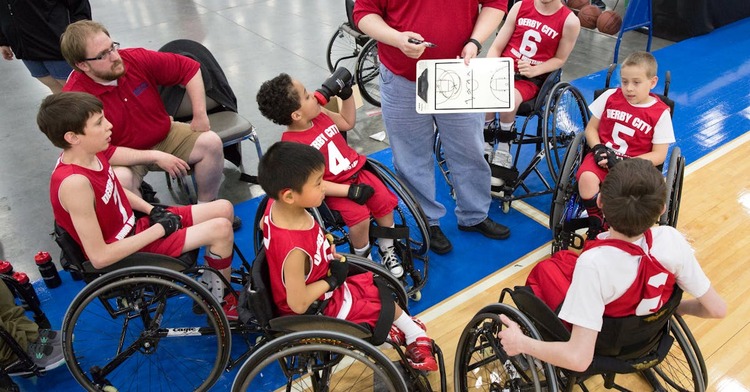
How to Get a California Handicap Parking Placard for a Child with Disabilities
Introduction
How to Get a California Handicap Parking Placard for a Child with Disabilities - Navigating the process of securing a handicap parking placard for a child with disabilities in California can be daunting. As a parent or guardian, understanding the requirements, documentation, and procedures is essential to ensure your child receives the support they need. This comprehensive guide will walk you through every step of obtaining a California handicap parking placard for your child, providing you with valuable information, including links to authoritative resources such as HandicapMD.com, the California DMV, and other relevant sources.
Understanding Handicap Parking Placards
Handicap parking placards, also known as disabled parking permits, allow individuals with disabilities to park in designated spaces closer to building entrances and other key locations. These placards are critical for children with disabilities who may have mobility issues or other challenges that make walking long distances difficult.
In California, the Department of Motor Vehicles (DMV) issues two types of handicap parking placards: permanent and temporary. The permanent placard is valid for two years, while the temporary placard is valid for up to six months and can be renewed as needed. For children with disabilities, a permanent placard is usually the most appropriate option, depending on the nature of their condition.
Who Qualifies for a Handicap Parking Placard in California?
To qualify for a handicap parking placard in California, a child must have a disability that severely impacts their mobility or ability to access public spaces. The California DMV outlines specific conditions that qualify for a placard, including:
Mobility Impairment: This includes children who cannot walk 200 feet without stopping to rest, use a wheelchair, or require the assistance of crutches, braces, or another person.
Severe Respiratory Conditions: Children with severe respiratory issues that limit their ability to breathe normally may qualify.
Cardiac Conditions: Children with certain heart conditions classified as Class III or Class IV by the American Heart Association are eligible.
Vision Impairment: Children who are legally blind or have severe vision impairments may also qualify.
Other Conditions: The DMV considers other medical conditions that severely limit mobility or require the use of a handicap parking space.
For a detailed list of qualifying conditions, you can visit the California DMV website.
Required Documentation
To apply for a handicap parking placard for your child, you will need to provide specific documentation to the California DMV. This documentation typically includes:
Medical Certification: A licensed physician, surgeon, physician assistant, nurse practitioner, or certified nurse-midwife must certify that your child has a qualifying disability. The certification must be completed on the DMV's Medical Certification Form (REG 195).
Application Form: You must complete the Application for Disabled Person Placard or Plates (REG 195), which includes information about your child, your child's physician, and the nature of the disability.
Proof of Identity: You will need to provide proof of your child's identity, such as a birth certificate or state-issued ID card.
Vehicle Registration: If you are applying for disabled license plates instead of a placard, you will need to provide your vehicle's registration information.
Step-by-Step Guide to Applying for a Handicap Parking Placard
Consult with Your Child's Healthcare Provider
The first step in obtaining a handicap parking placard for your child is to consult with their healthcare provider. Discuss your child's condition and ensure it meets the DMV's qualifications. The healthcare provider will need to complete the Medical Certification Form (REG 195) to certify the disability.
Complete the Application Form
Once you have the Medical Certification Form completed, you will need to fill out the Application for Disabled Person Placard or Plates (REG 195). Be sure to fill out the form accurately and completely, as any errors can delay the processing of your application.
Gather Supporting Documents
Along with the application and medical certification, gather any other necessary documents, such as proof of identity and vehicle registration (if applying for disabled plates).
Submit Your Application
You can submit your application to the DMV in several ways:
- By Mail: Send the completed application, medical certification, and any other required documents to the address listed on the application form.
- In Person: Visit your local DMV office to submit the application. This option may expedite the processing time.
- Online: Some DMV services allow for partial completion of the process online, but the medical certification must still be submitted physically.
- You can find your nearest DMV office using the DMV office locator.
Wait for Processing
After submitting your application, the DMV will process it and, if approved, will issue your child's handicap parking placard. Processing times can vary, but it typically takes several weeks to receive the placard by mail.
Renewing or Replacing the Placard
Permanent handicap parking placards must be renewed every two years. The DMV typically sends a renewal notice before the placard expires. Temporary placards must be renewed by reapplying with updated medical certification.
If your child's placard is lost or stolen, you can request a replacement by submitting a Replacement Request (REG 156) form to the DMV.
How to Use the Handicap Parking Placard
Once you receive your child's handicap parking placard, it's important to understand how to use it properly:
Display the Placard: The placard must be hung from the rearview mirror when the vehicle is parked in a designated handicap space. If your vehicle does not have a rearview mirror, the placard should be placed on the dashboard.
Restricted Use: The placard can only be used when your child is in the vehicle, either as a driver or passenger. Misuse of the placard can result in fines or revocation.
Parking Privileges: The handicap parking placard allows you to park in spaces designated for disabled persons, as well as in metered parking spaces without paying a fee. However, it does not grant exemption from all parking restrictions, such as time limits in certain areas.
Out-of-State Use: California handicap parking placards are recognized in all U.S. states and territories, as well as in many foreign countries. However, it’s important to check the specific regulations in other states or countries before traveling.
How HandicapMD.com Can Assist You
At HandicapMD.com, we specialize in helping families navigate the complexities of obtaining handicap parking placards for their loved ones. Our team of healthcare professionals understands the unique challenges faced by children with disabilities and works closely with families to ensure all necessary documentation is completed accurately.
Some of the services we offer include:
Telemedicine Consultations: We offer convenient telemedicine consultations with our qualified physicians, who can evaluate your child's condition and complete the necessary medical certification for a handicap parking placard.
Application Assistance: Our team can guide you through the application process, ensuring all forms are filled out correctly and submitted on time.
Support and Advocacy: We provide ongoing support and advocacy for families, helping them navigate any challenges that may arise during the application process.
For more information or to schedule a consultation, visit our HandicapMD.com services page.
Common Challenges and How to Overcome Them
While the process of obtaining a handicap parking placard for your child is designed to be straightforward, some families may encounter challenges. Here are some common issues and tips for overcoming them:
Incomplete Medical Certification
One of the most common reasons for application delays or denials is an incomplete or improperly filled out Medical Certification Form. Ensure that your child's healthcare provider is familiar with the DMV's requirements and completes the form thoroughly. If you have any questions about the certification, don't hesitate to ask for clarification.
Application Errors
Errors on the application form can lead to delays in processing. Double-check all information before submitting the form, including your child's name, address, and other personal details. If you’re unsure about any part of the application, consider seeking assistance from a professional service like HandicapMD.com.
Long Processing Times
Processing times for handicap parking placard applications can vary, especially during peak periods. To minimize delays, submit your application well in advance of when the placard is needed. If you need the placard urgently, consider submitting your application in person at a DMV office.
Renewal and Replacement Issues
If you don’t receive a renewal notice for your child's placard, be proactive in contacting the DMV to renew it before it expires. For lost or stolen placards, submit a replacement request as soon as possible to avoid any disruption in your child's parking privileges.
Importance of Handicap Parking Placards for Children with Disabilities
Handicap parking placards are more than just a convenience; they are essential tools that enhance the quality of life for children with disabilities and their families. These placards provide:
Accessibility: Handicap parking spaces are strategically located to minimize the distance between the parking area and building entrances, making it easier for children with mobility challenges to access public spaces.
Safety: Reducing the distance your child needs
to walk can significantly decrease the risk of falls, injuries, or other accidents, especially in busy or unfamiliar environments.
Independence: For older children and teenagers with disabilities, having a handicap parking placard can help them gain greater independence, allowing them to participate in activities with their peers with less reliance on others.
Reduced Stress: Knowing that you have access to a designated parking space can alleviate stress for both you and your child, making outings and everyday activities more enjoyable.
Legal Protections and Rights
Under the Americans with Disabilities Act (ADA) and California state law, individuals with disabilities have the right to reasonable accommodations, including access to handicap parking spaces. It is important to be aware of your child's rights and to advocate for them when necessary.
If you encounter any issues with accessing handicap parking or if your child's placard is not being honored, you have the right to take action. This may include filing a complaint with the DMV, contacting local authorities, or seeking legal assistance.
Conclusion
Obtaining a handicap parking placard for a child with disabilities in California is a crucial step in ensuring they have the accessibility and support they need. By following the steps outlined in this guide, you can navigate the application process with confidence and secure the necessary accommodations for your child.
For additional support and guidance, don’t hesitate to reach out to HandicapMD.com. Our team is here to help you every step of the way, from completing the medical certification to submitting the application and advocating for your child's rights.
For more information on handicap parking regulations and how to apply for a placard, visit the California DMV website and explore resources such as HandicapMD.com's blog for the latest updates and expert advice.
Securing a handicap parking placard for your child is not just about convenience—it's about ensuring their safety, independence, and well-being. By taking the time to understand and complete the application process, you are providing your child with the tools they need to thrive.
References:
.png)





